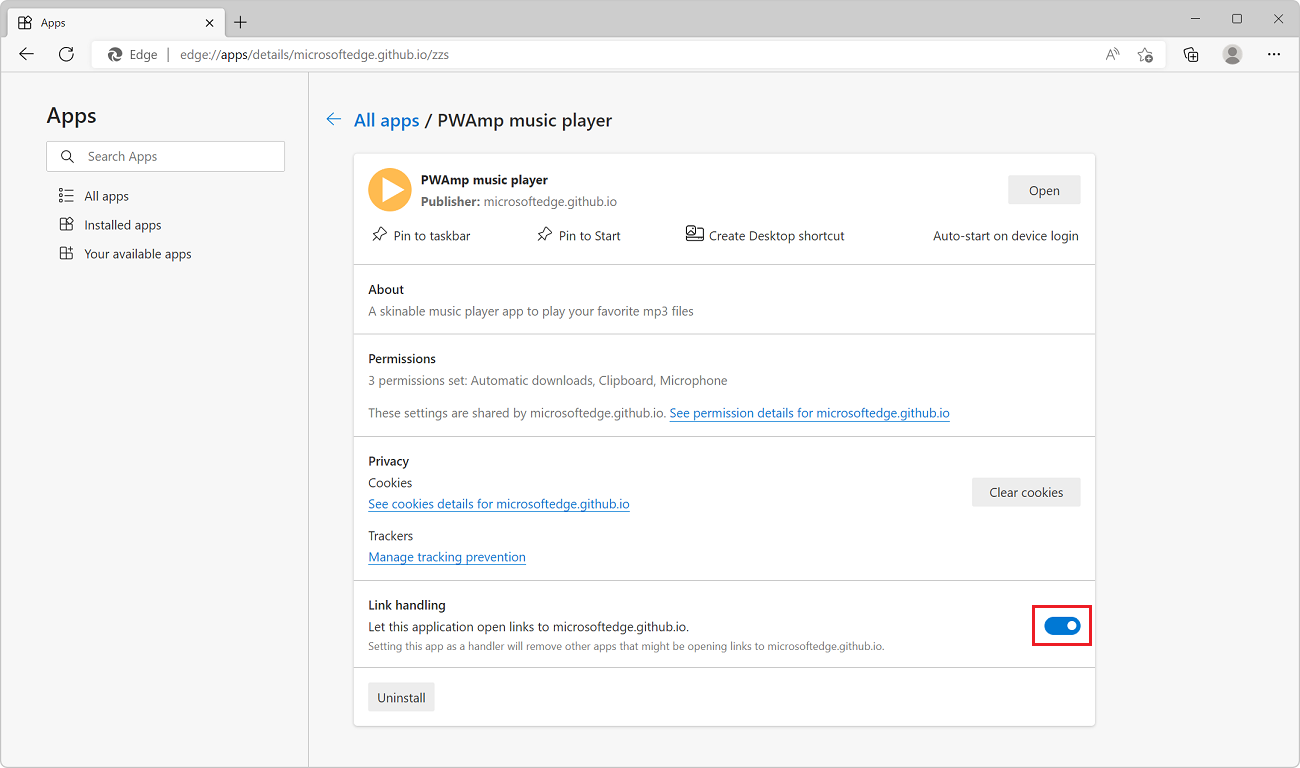Note
Access to this page requires authorization. You can try signing in or changing directories.
Access to this page requires authorization. You can try changing directories.
A Progressive Web App (PWA) on the device's operating system can handle links, so that when an associated URL is activated, the PWA can request to be launched instead of the web browser, to create a more engaging experience.
This link handling is like how native apps handle links on many operating systems.
Automatic link handling
The operating system that your PWA is installed on automatically launches your PWA for any link that refers to content that's within the scope of the PWA, when either of the following conditions are met:
- The PWA was installed from the Microsoft Store on Windows.
- The PWA was installed by using Microsoft Edge, and Microsoft Edge is the default browser on the device.
No code is required for automatic link handling to work, but end users can opt-out of automatic link handling. To opt-out of automatic link handling:
In Microsoft Edge, navigate to
edge://apps.Find the PWA you want to disable automatic link handling for and click Details.
On the PWA details page, under the Link handling section, click the toggle button.

Handle links from other origins by using scope extensions
Scope extensions make it possible for a PWA to capture navigation to paths, subdomains, or even sites other than its own scope. This can be useful for PWAs that span multiple domains for localization purposes. For example, a PWA may span contoso.com, contoso.co.uk, and contoso.fr.
The manifest of a PWA defines which part of the hosting domain the PWA is scoped to. For example, the www.contoso.com domain name may have a PWA defined under www.contoso.com/app with its scope set to /app. In this case, all the web pages available within the www.contoso.com/app path are part of the PWA scope. However, the web pages within the www.contoso.com/foo path are not part of the PWA scope. Furthermore, web pages that are available at bar.contoso.com/app or www.contoso.co.uk are also not part of the PWA scope.
Origin trial
As of October 17, 2024, the scope extensions feature is an origin trial. For status, see Web app scope extensions feature at Chrome Platform Status.
When the feature can be used in Microsoft Edge and is no longer in origin trial, the feature will be documented in the present article. See Scope Extensions for Web Apps, an Explainer in the manifest-incubations repo.
See also: